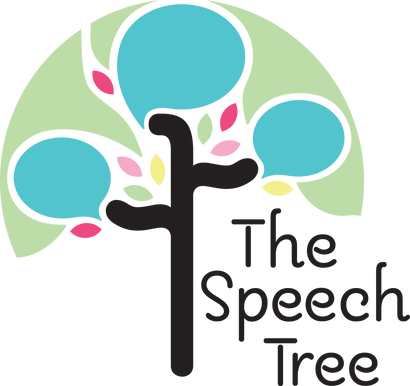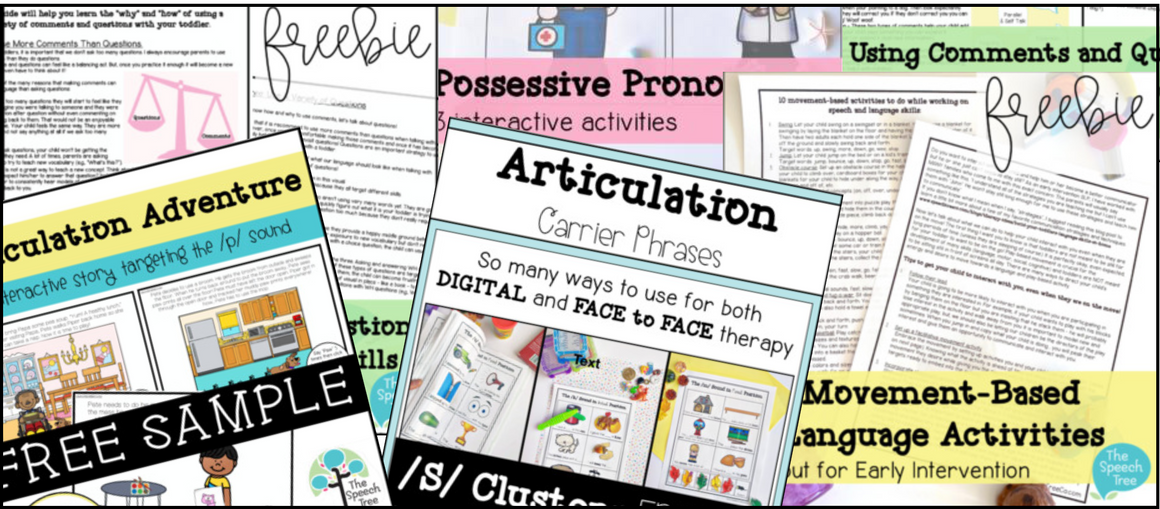Water Play in Early Intervention

Summer is here and that means it is time for water play!!
I love water as therapy tool because of the variety of activities you can do with it. Variety of activities = variety of vocabulary!
Let's refresh. What do I mean when I say "Target Words". Children with language delay need a lot of repetition and examples of new vocabulary words before they can be expected to understand them in a variety of settings or use them on their own. Choosing target words for different daily routines and activities can help you get those repetitions.
For example, you and your child are playing with a variety of toys In the water bucket. Your child pushes a boat across the water then gets a shovel and pours water over the cow, etc. You might be modeling something like "Woa that boat went fast! Your shovel is yellow. Oh no you poured it on your cow. Now your cow is all wet". Now, there is nothing wrong with that! Narrating what your child Is doing is great to help with their understanding of language. However, that is a LOT of different concepts you just threw at your child. Your child will have much more success learning and using new vocabulary if you focus on 3-4 target words per activity. For example, you could choose the target words : pour, boat, big, small. Then, as your child is playing you could be modeling things like: "Push BIG BOAT! Can you POUR it on the BIG BOAT? I see the SMALL BOAT!, etc". We aim to repeat our target words at least 5 times during an activity while being sure that the child's focus is on the items we are actually referring to.
Target words are a useful strategy when used in combination with other strategies such as using slow, exaggerated speech, getting on the child's level, and commenting on what the child is currently focused on.
With that being said, you will find that the activities below are repetitive and predictable. They are specifically designed for the early intervention population to help increase receptive and expressive vocabulary. You will notice that the structure of the activity remains the same while only one thing changes to keep it interesting.
One final note, don't be afraid to get messy but do be sure to keep control of the activity. Let your child explore and play in the water. Follow their lead. It is always suggested to do water play outside because there WILL be splashing! But don't worry if your child starts to get muddy or dirty from being wet in the grass. This is a sensory experience that is great for your child - you can always take a bath later! DO keep control. Have you ever tried to get your child's attention when you're in a toy room filled with toys scattered all over the floor. The second you try to get them to help you build a tower out of blocks, or put the play food on your plate, they are onto the next thing. Giving your child full control over all the toys or having too much visual clutter can decrease their attention on you which will make it harder for them to learn the new vocabulary you are trying to teach. I will include a note of how to keep control and attention for each activity below.
- Climb & Jump
Get your plastic water bin and fill it with water. Get the lid to that bin or any other flat piece of plastic. Place it on the outside of the bin diagonally to form something that looks like a ramp. Get a variety of waterproof toys (animals, cars, balls, etc). Tip for keeping control: give your child access to the water bucket and plastic ramp but only give them access to one of the waterproof toys at a time. Keep the rest in a plastic bag until he finishes with the first one. Give him/her one at a time.
The idea here is that the child will take one of the toys, have it climb up the ramp and jump into the pool. I have had clients who LOVE this activity but its all about how fun you make it (facial expressions, silly sounds, etc.).
Possible target words: UP (as the toy goes up up up the ramp), JUMP (as the toy jumps off into the water), SPLASH (as they hit the water), SWIM (after they are in the water), FAST/SLOW (going up the ramp either fast or slow), more, wet, go, etc.
- Wash
Get your plastic water bin, a sponge that is no longer needed, and some toys that are waterproof. Same tip for keeping control as mentioned above. Here, the child will practice washing their toys. An optional step is to have them put dirt on the toy to make it even more of a sensory experience and incorporate new vocabulary. You can start with the dirty or clean toys. Have the child dunk them in the water and scrub them with a sponge, one toy at a time. Then he/she can dry them off with a towel afterwards and see all of the toys he/she just cleaned!
Possible target words: clean, dirty, wet, dry, towel, wash, sponge, rinse, etc.
- Pour
Fill a plastic bin with water and get some cups. Place the water bin on the floor if you want your child to have free access to it. Or, if you are working on getting your child to ask for help, you can place it on a table outside or somewhere out of reach. The idea of this activity is to have your child fill their cup and walk around the back or front yard pouring the water onto different things that they find. The vocabulary targeted with this activity is going to be common things that you can find in the yard as well as the possible target words of: HELP (when they need help filling their cup) EMPTY/FULL (when their cup is empty or full), POUR, MORE, WET, DRY. Once your child's cup is full you can help them find things such as rocks, flowers, grass, brick, tree, leaf, etc. and pour the water on the item as they watch it go from dry to wet. Then race back to the water bucket and fill up the cup again. You can also work on verbs while going back to the water bucket: hop to the bucket, run to the bucket, walk, twirl, skip, etc.
- Inflatable drink holders
I love to use inflatable drink holders in water play (like these ones on amazon). You can place these in a water bin and have your child rescue the toys from the bottom of the bin and place them in the floats. You can also each take a float and race to the other side of the water bin. You can use the floaties to work on spatial concepts by placing toys "in, out, on, off, under" the floats. I will be posting a full story on how I like to use these floats on instagram later this week. Check my instagram @speechtreeco or back here later in the week for the link to the story!
Leave a comment
Comments will be approved before showing up.




